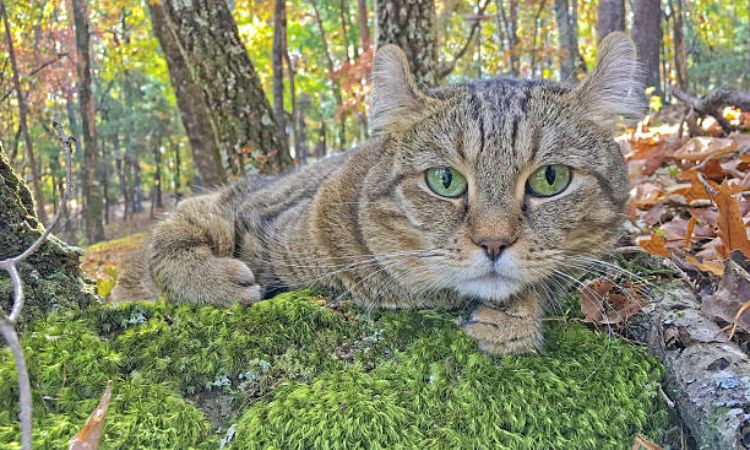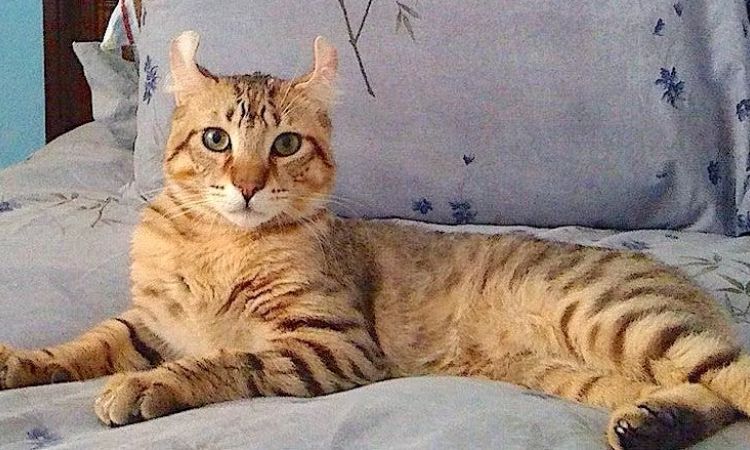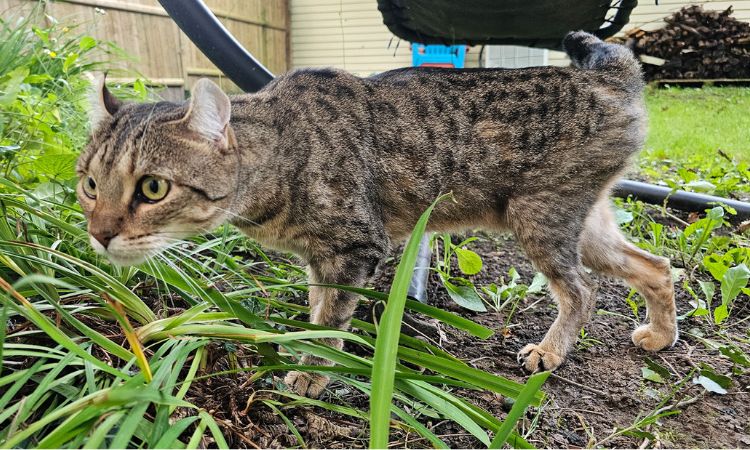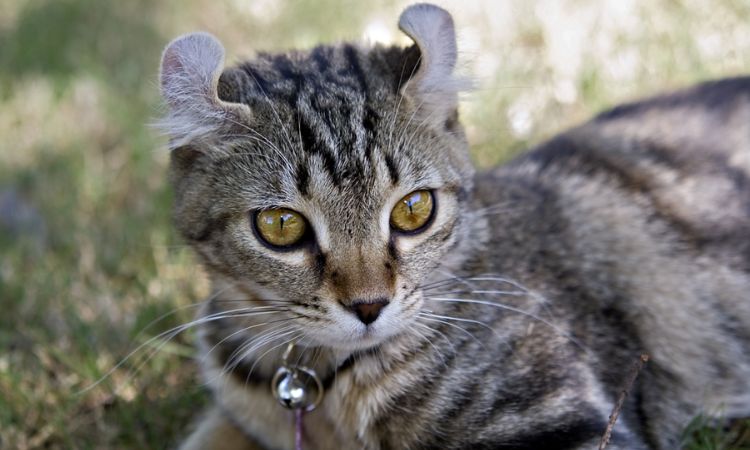With its curled ears, powerful build, and playful personality, the Highlander cat is a showstopper in any home. Known for looking like a miniature wildcat while acting like a loyal, affectionate companion, this relatively new breed has captured the hearts of cat lovers everywhere. In this article, we’ll explore everything you need to know about the Highlander its size, lifespan, unique traits, and what it takes to welcome one into your family.

Highlander Cat Price: What to Expect
Highlander cats are a striking and rare breed, and their price reflects their uniqueness. Whether you’re looking for a playful kitten or a mature cat, understanding the factors that influence cost can help you plan for bringing a Highlander into your home.
Highlander Kitten Price Range
Highlander kittens can vary significantly in price depending on quality, lineage, and location. On average:
- Pet-quality kittens: $600 – $1,200 USD. These kittens are perfect companions and will have the breed’s signature personality and appearance but may not meet strict show standards.
- Show-quality kittens: $1,500 – $2,000 USD or more. These kittens are bred with ideal conformation, including curled ears, bobtails, and striking coat patterns, making them suitable for cat shows.
Factors That Influence Cost
- Breeder reputation: Reputable breeders who follow ethical breeding practices and maintain health-tested cats generally charge more.
- Location: Prices can vary depending on the region. Highlanders are rarer in some states or countries, increasing demand and cost.
- Unique physical traits: Cats with distinctive curled ears, bobtails, or unusual coat colors/patterns may carry a premium price.
- Pedigree and lineage: Kittens descended from champion bloodlines are usually more expensive.
Initial and Ongoing Cost of Ownership
Bringing a Highlander cat home requires more than just the purchase price. Here’s a breakdown of typical costs:
- Initial setup: Expect to spend $200–$400 on essentials such as a carrier, litter box, scratching posts, toys, bedding, and grooming tools.
- Annual veterinary care: Routine vet visits, vaccinations, and preventive care can cost $200–$500 per year. Unexpected health issues or emergencies may increase this amount.
- Food and supplies: High-quality cat food, treats, litter, and toys can cost around $500–$800 annually.
- Insurance considerations: Pet insurance can be a wise investment for this rare breed, with monthly premiums averaging $25–$50 depending on coverage.
Adoption and Rescue Options
While Highlanders are rare, some cats do appear in rescues or with breeders looking to rehome adult cats. Adoption fees are often lower than buying from a breeder, usually $200–$600, and can be a rewarding option if you’re open to welcoming an adult Highlander into your home.
- Rarity in shelters: Due to their limited breeding and high demand, finding a Highlander in a shelter is uncommon. Connecting with breed-specific rescue organizations or attending TICA-sanctioned shows may increase your chances of finding one.

Physical Characteristics and Size
The Highlander cat is a striking breed, designed to resemble the wild big cats while maintaining the friendly and playful personality of a domestic cat. Its muscular build, unique features, and expressive appearance make it instantly recognizable.
Size and Weight
Highlanders are medium- to large-sized cats with a strong, athletic build.
- Males: Typically weigh between 15 and 20 pounds (6.8–9.1 kg)
- Females: Generally weigh between 10 and 14 pounds (4.5–6.4 kg)
They have a rectangular, muscular body with longer rear legs than front legs, giving them a slightly elevated rear posture. This structure contributes to their powerful, agile movements and dog-like playfulness. Highlanders reach their full size around three years of age.
Musculature and Build
Highlanders are large, athletic, and robust. Their muscular bodies, broad chest, and strong limbs allow them to move gracefully while still appearing powerful and imposing. This physicality supports their energetic, playful nature and makes them excellent climbers and hunters in play.
Unique Features of the Highlander
Curled Ears: The Defining Trait
Highlanders’ ears are one of their most recognizable features. They are medium-sized, wide at the base, and have a slight backward curl at the tips, which develops fully by the time the kitten reaches 10–12 weeks. This curl gives the breed its distinctive “wild cat” appearance.
Bobbed/Short Tail: Natural and Expressive
Highlanders naturally have a short or bobbed tail, usually 1 inch or longer. The tail may be kinked or curled, and it serves as an expressive feature, often wagging during play or when the cat is happy, similar to a dog.
Polydactyl Paws (Optional Trait)
Some Highlanders are polydactyl, meaning they have extra toes. While this is not part of the official breed standard, it can add to the breed’s big-cat appearance and may aid in climbing and balance.
Head and Face
Highlanders have a long, slightly sloping forehead and a blunt, squared muzzle. Their strong chin and wide nose bridge create a straight profile when viewed from the side. Eyes are slightly flattened or hooded ovals, contributing to their expressive and alert appearance.

Coat and Grooming Needs
Coat Types
Highlanders come in both short-haired and long-haired varieties. Both coat types can appear in a wide range of colors and patterns, including solid, tortie, tabby, and silver/smoke.
Shedding Level and Maintenance Frequency
Highlanders are moderate shedders, with increased shedding during seasonal changes.
- Short-haired Highlanders: Brush several times a week to remove loose hair and prevent minor tangles.
- Long-haired Highlanders: Require more frequent grooming, especially on longer areas like the belly and chest, to prevent matting and maintain coat health.
Occasional bathing is optional, with a moisturizing cat-safe shampoo recommended when necessary. Regular nail trimming, ear checks, and dental care are also important to maintain overall health.
Highlander Cat Lifespan and Health
Highlanders are robust, healthy cats with no known breed-specific genetic disorders, making them a generally low-risk choice for pet owners. With proper care, nutrition, and regular veterinary checkups, a Highlander can live a long and active life of 12 to 16 years, with some cats reaching 17 years in optimal conditions.
Common Health Considerations
While Highlanders are not prone to specific hereditary conditions, it’s important to monitor them for general feline health issues that can affect any cat:
- Urinary Tract Health: Highlanders can be susceptible to urinary tract infections or inflammation (idiopathic cystitis). Provide fresh water at all times and monitor litter box habits.
- Dental Health: Dental issues such as tartar buildup, gingivitis, and tooth resorption can occur. Regular teeth brushing with cat-safe toothpaste helps prevent problems.
- Kidney Disease: Older cats may develop kidney problems, so watch for symptoms like increased thirst, frequent urination, or weight loss.
- Diabetes: Less common, but overweight Highlanders can develop diabetes. Feeding a balanced, measured diet can reduce this risk.
- Arthritis: As Highlanders age, joint stiffness or arthritis can appear, especially in active cats with muscular builds.
Preventive Care
To ensure a long, healthy life, Highlanders require standard preventive care:
- Annual Vet Checkups: Full physical exams help detect potential issues early.
- Vaccinations: Core vaccines such as Feline Distemper (FIE), Cat Flu, and Feline Leukemia Virus (FeLV) are recommended.
- Parasite Prevention: Routine flea, tick, and worm prevention keeps your cat healthy and comfortable.
- Nutrition: Highlanders are active, muscular cats, so high-quality protein-based diets are essential. Avoid overfeeding to maintain a healthy weight.
- Hydration: Encourage water intake, as Highlanders are active cats that benefit from staying well-hydrated.
Overall, the Highlander is a hardy and lively breed with a lifespan comparable to other medium-to-large cats. With proper veterinary care, a balanced diet, and regular exercise, your Highlander can enjoy many years of playful, affectionate companionship.

Personality, Temperament, and Trainability
Highlanders are energetic, confident, and endlessly playful. They bring a dog-like enthusiasm to their daily routines, often following their owners from room to room, playing fetch, or climbing high perches to survey their surroundings. Their curiosity and intelligence make them highly interactive pets, eager to explore new toys, puzzles, and environments.
Despite their bold and striking appearance, Highlanders are gentle and affectionate with their human families. They thrive on attention and social interaction, forming strong bonds with adults, children, and even other pets. They are friendly toward visitors and rarely shy away from a new face, yet they tend to reserve their deepest affection for those they know well.
Trainability is one of the breed’s standout traits. Highlanders are quick learners and respond well to positive reinforcement. Simple commands, tricks, and leash training are possible with patience and consistent encouragement. Their intelligence and playful nature also make them excellent candidates for interactive play that stimulates both body and mind.
The Highlander cat is a striking mix of big-cat looks and playful, affectionate personality. With their curled ears, muscular build, and energetic demeanor, they make engaging companions for families who can meet their activity and attention needs. Understanding their size, care requirements, and costs ensures that potential owners are well-prepared to welcome this unique and lively breed into their home.






